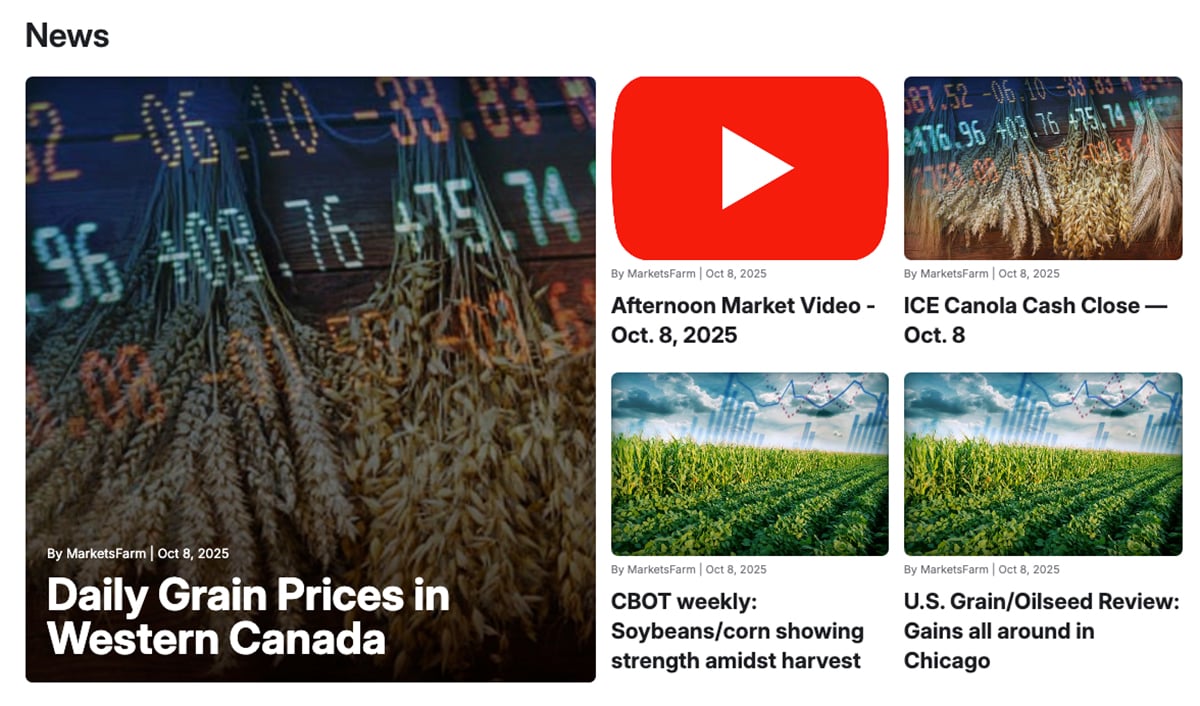Across the world, everyone producing major commodities is making a pile of money, except for farmers.
Although analysts say agricultural commodity prices will eventually benefit from the economic growth of China and India, farmers shouldn’t expect the explosive rise in prices that petroleum and metals have enjoyed for more than a year.
“China has increased its consumption of oil by 40 percent a year, but although they’re going to eat a lot more protein, they’re able to produce a lot of it themselves and there’s no shortage (of soybeans in world markets),” said Donald Coxe, a commodities market analyst with the Bank of Montreal in Chicago.
Read Also

VIDEO: Catch up with the Western Producer Markets Desk
The Western Producer Markets Desk provides daily updates on agricultural markets, with recent video commentary including looks into canola, wheat, cattle and feed grains.
With oil and industrial metals “it’s a shortage story and those stocks can’t be replaced. The (nickel at the) Voisey’s Bay Inco mine that’s coming on line this year was laid down 1.8 billion years ago.”
Analysts say the boom in oil and metals prices is due to insufficient supply. Right now the world’s major oil exporters, with the exception of Saudi Arabia and the United Arab Emirates, have maximized their oil producing capabilities. New oilfield exploration and development will produce significant new sources of oil only after months and years of work, leaving the world to grapple with short supplies for the foreseeable future.
Giant mining projects also takes years of development before they can add to world supplies. With China inhaling ever greater amounts of steel and oil, the outlook for petroleum and metal producers is rosy.
The situation for grains and oilseeds couldn’t be more different. There is little holding farmers back from much bigger crops if they receive good weather, as most of the world’s farmers got last year. Oil companies have trouble squeezing out an extra four percent per year in production in the best of times, but a farmer with perfect weather can produce many times more than in a poor year.
Farmers have continued to increase their productivity regardless of market prices.
“There are so many millions of producers,” said Coxe.
“The farmer looks year to year (in making his investment plans with a crop). He can’t be like (chief executive officer) Lord Brown at British Petroleum and take a 15-year view.”
Commodity analyst Patricia Mohr of the Bank of Nova Scotia said agricultural commodity values have increased since the start of the decade, but have fallen far short of the performance of other commodity classes.
Since October 2001, the bank’s all-commodity index has risen 70.1 percent in value, while the agricultural component alone has risen by only 29.4 percent.
“You just haven’t had the same sort of rally,” Mohr said. “Commodities have been a very solid investment class.”
“Since about 2002 they’ve actually outperformed the total return from either U.S. treasury bonds or the U.S. Standard and Poor’s 500 equity index.”
Coxe said the variability of weather means little when producing oil or minerals, but in agriculture it is often the dominating factor.
But in the long term, agricultural commodities may catch up.
Demand for protein will continue to grow from countries such as China. Farm production will become much more valuable as big, fast-developing countries lose cropland to desertification and the world’s oceans are depleted of fish stocks.
“But that’ll take a while,” said Coxe.

















